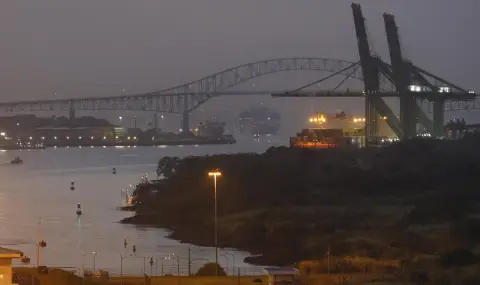Even if American warships will soon be able to pass through the Panama Canal with priority and for free, the road to clearing all disputes over one of the most important global trade routes will be long.
The Panama Canal is 82 kilometers long and connects the Atlantic and Pacific Oceans. Thanks to it, ships can move between the two oceans without any problems and do not have to transfer cargo or bypass the entire South America. That is why Panama has strategic value in the field of navigation for the US and many other nations.
With the beginning of Donald Trump's second term, the canal has once again come into the spotlight. The US president is irritated by China's growing influence in the region and constantly talks about "taking back" of the canal, in connection with which he did not rule out military intervention.
Trump's statements caused serious tension and bilateral talks at the highest level, which culminated in a joint declaration. However, it does not put an end to all controversial issues.
Panama does not care so much about China
Panama's President José Rael Mulino has already taken some steps to get closer to the Trump administration on the subject of China. After the visit of US Secretary of State Marco Rubio in February, Panama announced that it intends to withdraw from the prestigious "New Silk Road" project for China.
Within the framework of this project, China is implementing major infrastructure plans such as the construction of ports and airports around the world. In addition, the Mulino government is putting pressure on large Chinese concerns that own ports in Panama to leave the country.
The contradictions in the deal
Panama emphasizes that the terms of the treaty do not allow free passage for American ships, but now things look as if American warships will be able to count not only on priority passage through the canal, but also on exemption from fees. US Secretary of Defense Pete Hegseth announced that an agreement had been reached with Mulino this week, which gives the United States the opportunity to pass "with priority and free of charge".
However, there are serious contradictions in the different versions of the declaration that have been released. The Spanish version distributed by Panama reads: "Hegseth recognizes the leading role of Panama and its irrevocable sovereignty over the Panama Canal and its adjacent territories". This assurance is absent from the English version published by the Pentagon.
Therefore, British political scientist Natasha Lindstedt believes that Panama was deliberately left in the dark about the intentions of the Trump administration. "I think that sentence is deliberately absent from the English version - to create uncertainty in Panama and a feeling that the circumstances have not yet been clarified."
Who owns the canal?
The Panama Canal was built between 1904 and 1914 by the United States - so that American ships, including military ones, could move between the two oceans without problems.
In 1960, during the administration of President John F. Kennedy, negotiations began to return the Canal to Panama, which were continued under his successor. In 1977, US President Jimmy Carter and Panamanian Prime Minister Omar Torrijos concluded the relevant treaties. They envisage Panama taking control of the canal on New Year's Eve 1999. The country also undertakes to manage the canal neutrally.
Contrary to Trump's claims, the canal was neither given to the Panamanian people nor is it controlled by China.
However, China has influence over the canal. China is second only to the United States in terms of the most intensive use of the canal. The ports at both ends are managed by Chinese companies. This worries the United States, especially the aggressive Trump administration. The president has specifically emphasized that he wants to stop China's growing influence worldwide. Proof of this is his trade war, and as Trump has pointed out - he does not rule out military intervention to regain the Panama Canal.
Political scientist Natasha Lindstedt, who is from Panama, says that Donald Trump's return to the presidency has filled Panama and the entire region with concern. "The headlines in the media show a complete lack of understanding and concern about how they are operating and where this is going," she explains. "The US is anything but well-liked in Panama right now."
International relations expert Jorge Heine, however, does not believe that the US under Donald Trump is likely to actually undertake military intervention. "President Trump is using rhetoric that can sound extremely aggressive. But at the same time, he has made it clear that he is not very interested in waging war or using US troops in the aggressive way that his predecessors used them."
The US wants to push China out
For the countries of Central and South America, China is the most important trading partner. The country rejects US accusations that it exercises "harmful" influence on Panama.
However, it is not excluded that attempts to limit Chinese influence in the region are not necessarily in the US interest. "The US desire to reduce Chinese representation in Latin America can be perceived as legitimate," says Heine. But if the US really cares about winning the "hearts and minds" of governments and people, it should not prevent China from doing business in the region.
"This is badly received because it is seen as a drag on growth in Latin America," Heine added. "The US would do best to compete with China. To say: we build better ports - with us there will be more trade. We build better factories - with us you can do better business."
